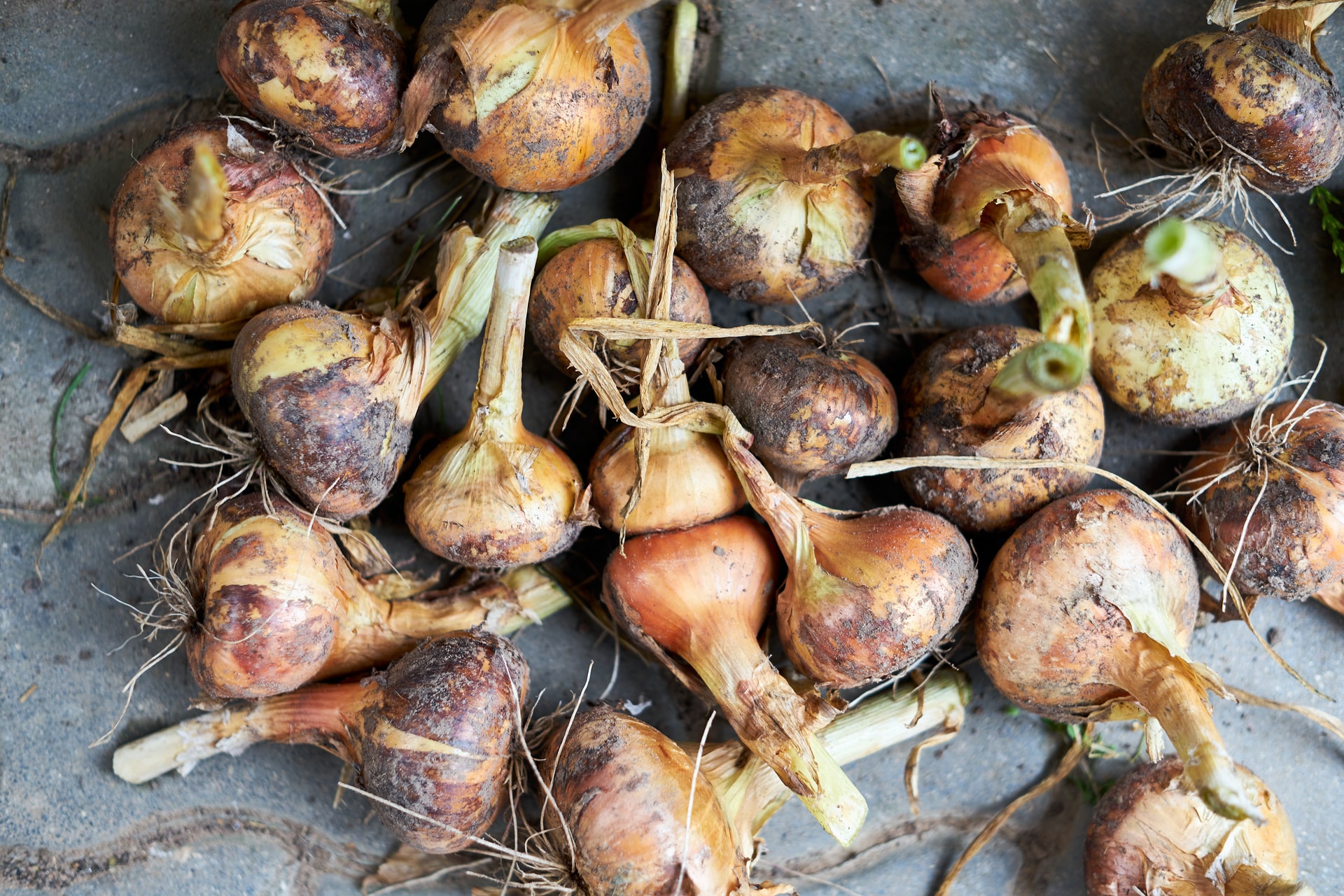Diseases that pose the greatest problem in onion cultivation include: downy mildew (Peronospora destructor) and gray mold (Botrytis spp.). Other fungal diseases affecting onions are white rot (Sclerotium cepivorum), rust (Puccinia allii), leaf blight (Alternaria porri), and smut (Urocystis cepulae).
Downy Mildew (Peronospora destructor)
Downy mildew is most commonly transmitted from year to year through infected bulbs, but it is not transmitted by seed. Infection occurs at temperatures ranging from 4°C to 25°C, with the most favorable being 12°C. The relative humidity of the air must be above 80% for 6 hours, followed by at least 11 hours at 95%. The pathogen can overwinter on onions from autumn planting and begins to reproduce early in the spring.
Symptoms appear on the leaves, which are lighter in color than healthy ones, tend to bend and hang toward the ground, and gradually die off. The leaves are also covered with a grayish-purple coating.
Crop rotation and the use of healthy planting material (bulbs) are preventive measures for controlling downy mildew. For autumn plantings, it is necessary to inspect the crop in the spring and remove any infected plants. Drip irrigation systems do not create high relative humidity conditions, unlike sprinkler irrigation, making drip irrigation a method of preventive protection. However, despite all preventive measures, chemical protection may often be necessary. Fungicides used to combat onion downy mildew include contact fungicides based on copper and combination fungicides (cymoxanil and famoxadone), as well as systemic fungicides with active ingredients such as benalaxyl, metalaxyl, and fosetyl.













































